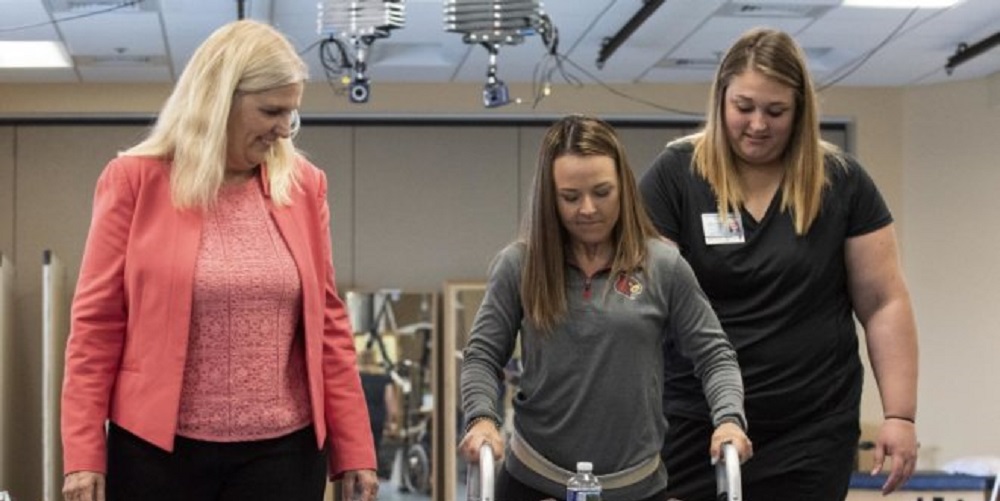A team of American-based researchers have implanted electrodes in the lower backs of four patients, all of whom regained some movement.
This ground-breaking progress is the newest development in a string of outcomes at the Kentucky Spinal Cord Injury Research Center at the University of Louisville (UofL), all pointing to the potential of technology in improving quality of life – and even recovery – following spinal cord injury.
Four research participants living with traumatic, motor complete spinal cord injury, were fitted with this electrode technology. Two are able to walk over ground with epidural stimulation following epidural stimulation paired with daily locomotor training. In addition, all four participants achieved independent standing and trunk stability when using the stimulation and maintaining their mental focus.
“This research demonstrates that some brain-to-spine connectivity may be restored years after a spinal cord injury as these participants living with motor complete paralysis were able to walk, stand, regain trunk mobility and recover a number of motor functions without physical assistance when using the epidural stimulator and maintaining focus to take steps,” says author Susan Harkema, Ph.D., professor and associate director of the Kentucky Spinal Cord Injury Research Center at the University of Louisville. “We must expand this research — hopefully, with improved stimulator technology — to more participants to realise the full potential of the progress we’re seeing in the lab, as the potential this provides for the 1.2 million people living with paralysis from a spinal cord injury is tremendous.”
The American Spinal Injury Association Impairment Scale (AIS) was used to classify the spinal cord injuries of each of the four participants. When the four participants joined the study, they were at least 2.5 years post injury. They were unable to stand, walk or voluntarily move their legs. Eight to nine weeks prior to the implantation of an epidural stimulator, they started daily locomotor training – manual facilitation of stepping on a treadmill – five days per week for two hours each day. Although there were no changes to their locomotor abilities prior to the implant, following the epidural stimulation participants were able to step when the stimulator was on and the individual intended to walk. Participants 3 and 4 were able to achieve walking over ground – in addition to on a treadmill – with assistive devices, such as a walker and horizontal poles for balance while the stimulator was on.
“Being a participant in this study truly changed my life, as it has provided me with a hope that I didn’t think was possible after my car accident,” says Kelly Thomas, a 23-year-old from Florida, also referred to as Participant 4. “The first day I took steps on my own was an emotional milestone in my recovery that I’ll never forget as one minute I was walking with the trainer’s assistance and, while they stopped, I continued walking on my own. It’s amazing what the human body can accomplish with help from research and technology.”
Jeff Marquis, a 35-year-old Wisconsin native who now lives in Louisville, was the first participant in this study to attain bilateral steps. “The first steps after my mountain biking accident were such a surprise, and I am thrilled to have progressed by continuing to take more steps each day. In addition, my endurance has improved, as I’ve regained strength and the independence to do things I used to take for granted like cooking and cleaning,” says Marquis, who is participant 3 in New England Journal of Medicine study. “My main priority is to be a participant in this research and further the findings, as what the University of Louisville team does each day is instrumental for the millions of individuals living with paralysis from a spinal cord injury.”
“While more clinical research must be done with larger cohorts, these findings confirm that the spinal cord has the capacity to recover the ability to walk with the right combination of epidural stimulation, daily training and the intent to step independently with each footstep,” says Claudia Angeli, Ph.D., senior researcher, Human Locomotor Research Center at Frazier Rehab Institute, and assistant professor, University of Louisville’s Kentucky Spinal Cord Injury Research Center.







